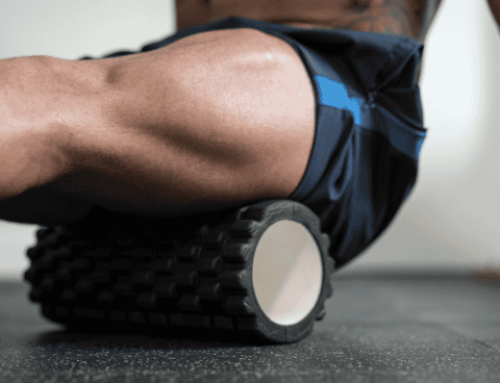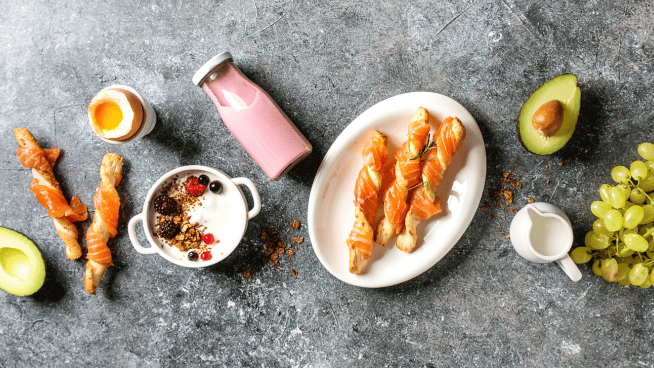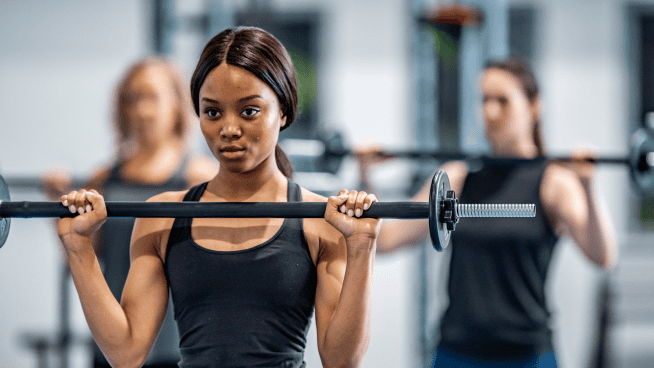![]()
Workouts are sometimes made unnecessarily complicated. In an effort to pack in as much work as possible, we end up following some haphazard plan that doesn’t do any single thing very effectively.
Sometimes, simple is better.
That’s why I developed the workout blueprint below for my clients and patients looking to get in better shape and lose weight. The concept is simple: Switch up your workouts to always keep your body guessing. If you get used to the workouts you are performing, you will hit a plateau and burn out. My programs can be adapted for beginners all the way to body builders who have been lifting for years.
Step 1: Dynamic Warm-up
Dynamic stretching should be performed before workouts. The key is to make it sport- or exercise-specific. If you are planning to perform a sprinting workout, go for a light jog beforehand. If you are going for a long-distance jog, take a brisk walk or light jog first. If you are going to perform a leg day at the gym, including Squats and Lunges with weights, do Bodyweight Squats and Lunges beforehand to prepare your muscles.
Dynamic stretching takes a muscle through its range of motion—getting it warmed up without removing elasticity and power. Dynamic stretching is controlled stretching with movement—e.g, performing slow Walking Lunges. It helps to get blood flowing to your muscles and gets your heart rate up—plus, it increases your core temperature to prepare you for your workout, practice, game or event.
RELATED: 10-Minute Dynamic Warm-Up for Any Workout
Start off with a dynamic warm-up to get your muscles limber. Gone are the days of static stretching before exercise. Research has proven that static stretching actually deactivates the muscles for approximately 10 minutes, which limits your strength and explosiveness during exercise.
Step 2: Joint Mobility
I usually switch from day to day between hip and shoulder mobility. These are crucial joints that need specific attention before you begin your workout. On hip mobility days, perform 2-3 sets of Fire Hydrants, Horse Riders and Bird Dogs. On shoulder mobility days, perform 2-3 sets of Internal Rotation, External Rotation, Scarecrows and Hitchhikers.
Step 3: Core Work
Engaging your core at the beginning of your workout is a great way to make sure you actually do it. At the gym, I see people saving core work for last and getting too tired or running out of time. Get it done first! Go through sets of Planks, Side Planks and Hip-Ups on a BOSU ball to get your core activated before your workout.
Step 4: Plyometrics
Something as basic as Box Jumps or Split Squat Jumps will get you the dynamic power you need. Doing plyometric power drills before your workouts is ideal. It is too tough to work on plyometrics after you are fatigued from lifting.
RELATED: The 10 Best Plyometric Exercises for Athletes
Step 5: Strength Training
The biggest portion of your workout should be strength training. This is where adaptation and variation come in. I recommend rotating through circuits of 3-4 exercises. I have my clients and patients combine an upper-body pushing exercise (e.g., Bench Press), an upper-body pulling exercise (e.g., Pull-Ups) and a lower-body exercise (e.g., Single-Leg Romanian Deadlifts). Complete multiple sets of the circuit at a rapid pace and rest between sets. This will build your strength and also increase your heart rate.
Step 6: Conditioning
This can vary as well. Whether you run Sprints, Jump Rope, Bike or Row, give 100 percent for 30 seconds followed by a one-minute break. Complete 3-4 repetitions of interval cardio. You will burn off more calories with high intensity interval cardio than with slow-paced, long-distance cardio.
RELATED: How Much Conditioning Do You Really Need?
Step 7: Cooldown
Static stretching involves controlled stretching of a single muscle group—e.g., standing, bending over and holding a hamstring stretch for 30 seconds. This helps to elongate and relax the muscles you are stretching. However, static stretching makes muscles less elastic, which can inhibit their function. After a workout, static stretching is ideal. Once your muscles are fatigued, you can go through controlled static stretching to decrease soreness, inflammation and muscle tension while also keeping your muscles pliable.
Step 8: Foam Rolling
Use a foam roller on your glutes, hamstrings, piriformis, IT bands, quadriceps, gastrocnemius and soleus. Instead of rolling around randomly, roll on the targeted muscle until you feel a tender spot (it will feel like a bruise), then stay on that spot for 20-30 seconds. This breaks up adhesions (or trigger points) in the muscle. Spend approximately 5 minutes finding tender spots and working them out.
This exercise routine can be varied with specific exercises, but the general idea stays the same. I came up with this routine because I would get burned out at the gym. I have been an athlete my whole life, playing both baseball and hockey in college. Working out has always been a big part of my life. After college, I continued to work out, but I did the same lifts every other day and was at a plateau. Once I learned more about how muscles work, develop and recover, I figured out how to avoid plateaus, and I developed a routine to break the cycle.
This routine can be easily followed. It should keep you motivated because you can do new, fun exercises each day. You will never get burned out doing the same old exercise with the same weight. You can typically get through the entire routine in about an hour.
[cf]skyword_tracking_tag[/cf]RECOMMENDED FOR YOU
MOST POPULAR
![]()
Workouts are sometimes made unnecessarily complicated. In an effort to pack in as much work as possible, we end up following some haphazard plan that doesn’t do any single thing very effectively.
Sometimes, simple is better.
That’s why I developed the workout blueprint below for my clients and patients looking to get in better shape and lose weight. The concept is simple: Switch up your workouts to always keep your body guessing. If you get used to the workouts you are performing, you will hit a plateau and burn out. My programs can be adapted for beginners all the way to body builders who have been lifting for years.
Step 1: Dynamic Warm-up
Dynamic stretching should be performed before workouts. The key is to make it sport- or exercise-specific. If you are planning to perform a sprinting workout, go for a light jog beforehand. If you are going for a long-distance jog, take a brisk walk or light jog first. If you are going to perform a leg day at the gym, including Squats and Lunges with weights, do Bodyweight Squats and Lunges beforehand to prepare your muscles.
Dynamic stretching takes a muscle through its range of motion—getting it warmed up without removing elasticity and power. Dynamic stretching is controlled stretching with movement—e.g, performing slow Walking Lunges. It helps to get blood flowing to your muscles and gets your heart rate up—plus, it increases your core temperature to prepare you for your workout, practice, game or event.
RELATED: 10-Minute Dynamic Warm-Up for Any Workout
Start off with a dynamic warm-up to get your muscles limber. Gone are the days of static stretching before exercise. Research has proven that static stretching actually deactivates the muscles for approximately 10 minutes, which limits your strength and explosiveness during exercise.
Step 2: Joint Mobility
I usually switch from day to day between hip and shoulder mobility. These are crucial joints that need specific attention before you begin your workout. On hip mobility days, perform 2-3 sets of Fire Hydrants, Horse Riders and Bird Dogs. On shoulder mobility days, perform 2-3 sets of Internal Rotation, External Rotation, Scarecrows and Hitchhikers.
Step 3: Core Work
Engaging your core at the beginning of your workout is a great way to make sure you actually do it. At the gym, I see people saving core work for last and getting too tired or running out of time. Get it done first! Go through sets of Planks, Side Planks and Hip-Ups on a BOSU ball to get your core activated before your workout.
Step 4: Plyometrics
Something as basic as Box Jumps or Split Squat Jumps will get you the dynamic power you need. Doing plyometric power drills before your workouts is ideal. It is too tough to work on plyometrics after you are fatigued from lifting.
RELATED: The 10 Best Plyometric Exercises for Athletes
Step 5: Strength Training
The biggest portion of your workout should be strength training. This is where adaptation and variation come in. I recommend rotating through circuits of 3-4 exercises. I have my clients and patients combine an upper-body pushing exercise (e.g., Bench Press), an upper-body pulling exercise (e.g., Pull-Ups) and a lower-body exercise (e.g., Single-Leg Romanian Deadlifts). Complete multiple sets of the circuit at a rapid pace and rest between sets. This will build your strength and also increase your heart rate.
Step 6: Conditioning
This can vary as well. Whether you run Sprints, Jump Rope, Bike or Row, give 100 percent for 30 seconds followed by a one-minute break. Complete 3-4 repetitions of interval cardio. You will burn off more calories with high intensity interval cardio than with slow-paced, long-distance cardio.
RELATED: How Much Conditioning Do You Really Need?
Step 7: Cooldown
Static stretching involves controlled stretching of a single muscle group—e.g., standing, bending over and holding a hamstring stretch for 30 seconds. This helps to elongate and relax the muscles you are stretching. However, static stretching makes muscles less elastic, which can inhibit their function. After a workout, static stretching is ideal. Once your muscles are fatigued, you can go through controlled static stretching to decrease soreness, inflammation and muscle tension while also keeping your muscles pliable.
Step 8: Foam Rolling
Use a foam roller on your glutes, hamstrings, piriformis, IT bands, quadriceps, gastrocnemius and soleus. Instead of rolling around randomly, roll on the targeted muscle until you feel a tender spot (it will feel like a bruise), then stay on that spot for 20-30 seconds. This breaks up adhesions (or trigger points) in the muscle. Spend approximately 5 minutes finding tender spots and working them out.
This exercise routine can be varied with specific exercises, but the general idea stays the same. I came up with this routine because I would get burned out at the gym. I have been an athlete my whole life, playing both baseball and hockey in college. Working out has always been a big part of my life. After college, I continued to work out, but I did the same lifts every other day and was at a plateau. Once I learned more about how muscles work, develop and recover, I figured out how to avoid plateaus, and I developed a routine to break the cycle.
This routine can be easily followed. It should keep you motivated because you can do new, fun exercises each day. You will never get burned out doing the same old exercise with the same weight. You can typically get through the entire routine in about an hour.










